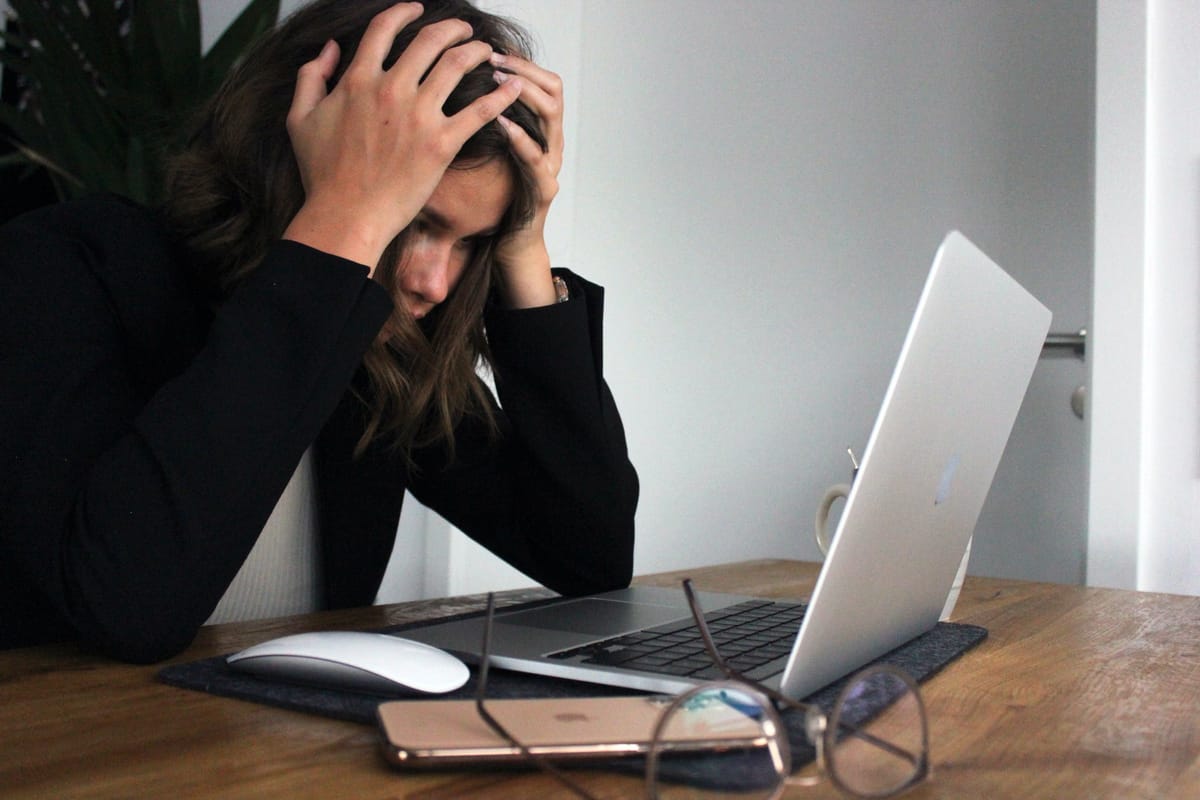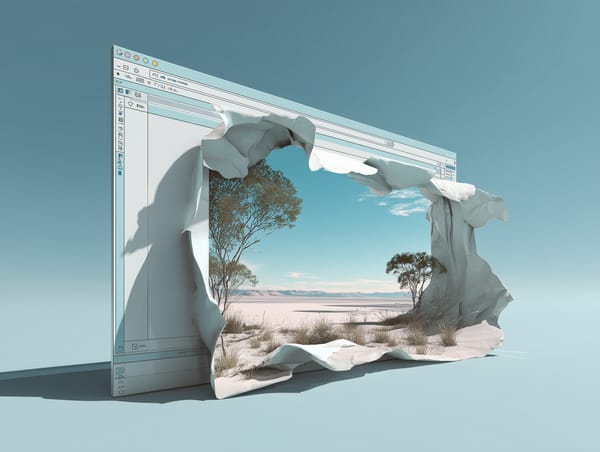How to design under stress
Designing under stress may seem like an impossible task, but with the right tools and methods, it can be done without any negative effects on your work.

Designing under stress may seem like an impossible task, but with the right tools and methods, it can be done without any negative effects on your work.
In this post, we'll discuss some tips for staying calm and focused while you're designing, as well as how to deal with common sources of stress.
By following these guidelines, you'll be able to produce your best work possible—even when times are tough.
How to identify when you're under stress
Frequently, graphic designers are under intense pressure to deliver brand-compliant, high-quality work within short deadlines. Interestingly enough, this type of stress can lead to highly inventive solutions.
One of the most important things to remember when feeling stressed is that it is not always simple to identify the source of the stress.
You may feel as though you are being pulled in a million different directions or as though you are constantly juggling too many balls.
However, by stepping back and assessing what's going on around you, you can begin to gain a better understanding of the source of your stress.
How to take a step back and assess the situation
No one ever said graphic design was an easy profession. In fact, it can be downright stressful at times. When the pressure is on and you’re feeling overwhelmed, it can be tough to know how to proceed.
One of the best ways to deal with stress is to take a step back and assess the situation.
Here are four tips for how to do just that:
Simplify your design: When you’re feeling stressed, it can be tempting to try and make your design more complex in an effort to impress. But this is often a mistake.
Overcomplicating your design will only make it harder to execute and increase the chances of errors. Instead, focus on simplicity. A clean, straightforward design is more likely to impress than a busy one.
Break the project down into smaller tasks: Start by making a list of all of the tasks that need to be completed for the project. Then, prioritise these tasks in order of importance. Once you have a clear idea of what needs to be done, you can start working on each task one at a time.
If you find yourself getting stressed while working on a particular task, try taking a break or doing something else for a few minutes. Once you've had a chance to relax, you can come back to the task and approach it with a fresh perspective.
- Set realistic goals: If you’re constantly putting pressure on yourself to meet unrealistic goals, it’s no wonder you’re feeling stressed. Make sure the goals you set are achievable so you can actually enjoy the process of reaching them.
- Take a break: Sometimes the best way to deal with stress is to simply walk away from the project for a little while. Get some fresh air, clear your head, and come back feeling refreshed and ready to tackle the task at hand.

How to take care of yourself when you're under stress
No one is immune to the stress of graphic design. It can be a very demanding and challenging field, and it’s easy to get overwhelmed. When you’re under pressure, it’s important to take care of yourself both physically and mentally.
Here are some tips for staying healthy when you’re feeling stressed out:
- Get enough sleep: When you’re sleep-deprived, your body is under more stress and you’re more likely to make mistakes. Graphic design is a creative field, so it’s important to get enough rest so you can be at your best.
- Eat healthily: Junk food will make you fatigued and anxious. Consume plenty of fruits, veggies, and healthy grains to maintain your energy levels.
- Exercise: Endorphins, which have mood-boosting qualities, are released during exercise. A quick stroll or run might help relieve stress.
- Connect with others: Social support is essential for stress management. Talk to friends or family members about what’s going on in your life. They can offer words of encouragement and help you see things from a different perspective.
Graphic design is a passion of yours, so don’t let stress ruin your love for it. Take care of yourself and your work will suffer less in the long run.

Find an avenue for creativity outside of work
Finding a creative outlet outside of work is essential for maintaining your creativity.
When you’re constantly bombarded with deadlines and stress at work, it’s hard to find the time or energy to be creative.
But if you can find an activity that you enjoy and that allows you to express yourself creatively, it can help keep your creative juices flowing.
When it comes to choosing a creative outlet, there are no rules—it may be anything that you enjoy and allows you to be creative. After a long day at work, some people enjoy painting or drawing, while others prefer writing or playing music.
Whatever it is that you enjoy, make sure to carve out some time for it in your schedule so that you can keep your creativity alive.

How to Delegate Tasks to Others
One of the best ways to reduce stress is to delegate tasks to others. This can be especially helpful when it comes to graphic design projects.
In these situations, it's important to know how to delegate tasks to others in order to lighten the load.
When delegating tasks, make sure you are clear about what you want and provide any necessary resources. You should also set a deadline for when you expect the task to be completed.
Here are three tips for doing just that:
- Create a list of every task that needs to be completed and then rank them in order of importance. You'll be able to see which tasks you can assign to others thanks to this.
- Choose the best candidate for the position. It's critical to select someone qualified to complete the tasks when delegating them. If not, you'll only have more work to do in the end.
- Issue concise instructions. Make sure you give the person you've chosen to complete a task to clear instructions once you've assigned them. This will make it easier to guarantee that the work is done effectively and correctly.
How to create a plan of action
It is more important than ever to have a plan of action when under pressure. This will help you maintain concentration and avoid costly errors.
Here are the four steps to creating an action plan:
- Define the problem: Be as specific as possible, and ensure you comprehend the project's requirements. If you are unsure of what the client wants, you should request clarification.
- Research the problem. This crucial step will assist you in developing a creative solution.
- Generate ideas. Here is where your imagination must come into play. Together with your team or on your own, generate potential solutions through brainstorming.
- Choose the best solution. After generating some ideas, it is time to select the best one. Evaluate each proposal based on its viability, expense, and effect. The optimal solution is one that meets all of your requirements.
Remember to take breaks, and if you're feeling overwhelmed, don't be afraid to ask for assistance. With a little effort and planning, you can design anything!
How to Stick to That Plan
One of the biggest challenges for any graphic designer is to stick to their plan. This can be especially difficult when working under stress. But with a little bit of discipline, it can be done.
Here are five tips that will help you stay on track:
Make a schedule and stick to it. One of the best ways to manage stress while freelancing in graphic design is to make and stick to a schedule. This will help you avoid working long hours, which can lead to burnout.
When you have a set routine, you know what tasks need to be completed each day and you can plan your time accordingly. This also allows for some downtime during which you can relax and rejuvenate.
Set deadlines and meet them. When you are working on a freelance project, it is important to set realistic deadlines. This will help you avoid getting overwhelmed by the work and will allow you to stay on track.
Make sure to communicate these deadlines with your client so that they are aware of your timeline.
- Don't procrastinate. It's one of the worst things you can do to your creativity and productivity. When you put off work, you're not just delaying the task at hand; you're also robbing yourself of the time and energy that would have gone into it. And that's a recipe for disaster when it comes to creative endeavours.
Stay organised. Most freelance graphic designers will tell you that one of the keys to success is staying organised. This means having a system for tracking all of your work, as well as your deadlines and due dates.
It also means keeping your work area clean and tidy so you can focus on your projects without being distracted.
Finally, it means creating a filing system for your designs so you can easily find them when you need to make changes or tweak something.
- Keep a positive attitude. No one ever became a great graphic designer by giving up at the first sign of stress. In fact, the best designers thrive under pressure and are able to turn out their best work when they’re feeling stressed. How do they do it?... by keeping a positive attitude.
It’s easy to get discouraged when you’re feeling stressed, but it’s important to remember that stress is just a part of the design process. If you can keep your head up and stay positive, you’ll be able to push through the tough times and come out on top.
So next time you’re feeling stressed, take a deep breath and remind yourself that you’re a great graphic designer. You can handle anything that comes your way.
Graphic designers who are able to stick to their plans and meet deadlines are more likely to be successful in their careers. With a little bit of discipline, you can be one of them!
Look for a mentor
One of the best ways to learn how to design under stress is to find a mentor. This is someone who has been in the industry for a long time and can offer guidance and advice.
Mentors can help you improve your skills and find your way in the world of graphic design.
Finding a mentor can be as simple as asking around or searching online. There are many design forums and websites where you can find mentors. Once you find someone, reach out and ask if they’re willing to help you.
Mentors can offer invaluable advice and guidance. If you’re struggling with stress or designing under pressure, reach out to a mentor today.
How to reward yourself for a job well done
It can be tough to stay motivated and focused when there's so much on the line. But it's important to find ways to reward yourself for a job well done.
One way to do this is to take a break and do something fun, like going for a walk or watching a movie.
Another way to reward yourself is to buy something that you've been wanting, like a new piece of software or a new book on graphic design. Whatever you do, make sure to give yourself a pat on the back for a job well done! You deserve it!
Stress is an unavoidable part of life, but that doesn’t mean it has to control your life. In fact, stress can actually be a powerful motivator when harnessed in the right way.
The key to using stress to your advantage is learning how to design under stress. By following the tips I’ve provided in this post, you can learn how to take those creative ideas bouncing around in your head and turn them into reality, even when you feel like you don’t have a minute to spare.
How do you deal with stress while designing? Please share your tips in the comments below!



